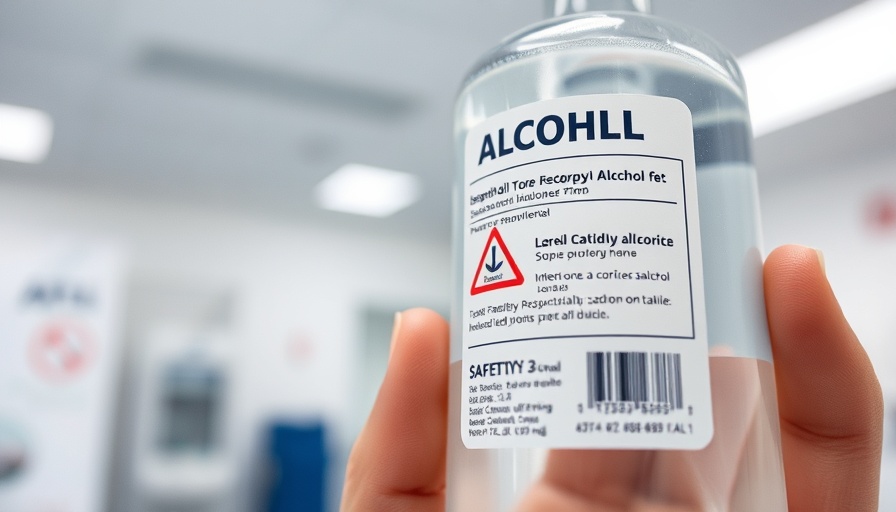
Understanding Aseptic Skin Preparation in Veterinary Practices
Aseptic techniques are vital in veterinary medicine, especially when it comes to procedures such as intravenous (IV) catheter placement. These procedures not only signify a critical aspect of patient care but also underscore the necessity of maintaining optimal infection control practices. The IV catheterization process requires precision, not just in placement but also in the preparatory steps taken prior to the actual procedure.
Current Best Practices for IV Catheterization
In a comprehensive overview by Amanda M. Shelby, renowned expert in veterinary anesthesia and analgesia, several best practices for preparing the skin before IV catheter placement have been articulated. Despite various methods employed by technicians, some foundational techniques remain universally acknowledged:
- Remove Hair: Start with the careful removal of hair at the site to ensure a clean space for application.
- Use of Isopropyl Alcohol: Wipe the site with 70% isopropyl alcohol-soaked gauze to remove any oils or organic debris.
- Chlorhexidine Application: Apply a non-diluted chlorhexidine scrub (2-4%) and allow it to sit for 30-120 seconds. This step is vital to ensure effectiveness against microorganisms.
- Final Skin Preparation: Remove the chlorhexidine and proceed with catheter placement.
Additionally, for long-term catheter placements such as peripheral central venous catheters (PICC) or jugular lines, the use of sterile gloves during cannulation is critical to uphold aseptic techniques.
Professional Guidelines and Literature Insights
The American Animal Hospital Association (AAHA) has established the Infection Control, Prevention, and Biosecurity (ICPB) Guidelines, which inform veterinary professionals on best practices to mitigate the risk of infection. These guidelines recommend hair removal and the use of chlorhexidine, albeit at a diluted concentration of 0.5-2% in saline— a practice that Shelby has suggested might not align with the most recent developed techniques.
Interestingly, the guidelines omit isopropyl alcohol from their recommendations for peripheral catheter management while placing more emphasis on chlorhexidine. This divergence between experienced practitioners' preferred methods and consensus guidelines raises concerns about the optimal practices for every veterinary facility.
Importance of Contact Time in Antiseptic Application
One contentious aspect in the preparation debate is the contact time of the antiseptic application. Shelby argues for the importance of maintaining contact time, although varying methods may suggest alternating antiseptics. Research supports the theory that effective contact time is crucial for bacterial kill efficacy. Therefore, adhering strictly to the timing protocols during skin preparation could yield detrimental results if disregarded.
Future Perspectives on Veterinary Infection Control
As veterinary medicine continues to evolve, staying abreast of new research and updates in sanitization practices is paramount. Integrating these revisions in hospital protocols can lead to improved outcomes and a potential decrease in infection rates. Veterinary clinic owners and managers, in particular, can benefit from periodically reviewing their aseptic techniques and establishing comprehensive training for all staff.
Implementing Best Practices in Your Facility
For veterinary clinic owners and managers, a proactive approach to adopting best practices raises the question: how can your facility integrate these insights into daily operations? Regular training sessions, protocol updates based on recent literature, and the education of staff about the importance of aseptic techniques bonding can enhance team confidence and patient safety. Facilities might also consider developing feedback mechanisms to gauge the effectiveness of these changes.
Creating a Culture of Infection Control
A positive infection control culture is arguably as important as the methods used for skin preparation. Encouraging open dialogue about challenges and techniques can fortify team confidence and enhance overall patient care. This approach not only benefits staff morale but also influences the clinic’s reputation for safety, promoting client trust and possibly leading to increased clientele.
In conclusion, understanding and implementing current best practices for aseptic skin preparation for IV catheter placement is crucial for all veterinary facilities. By continually adapting to new recommendations and ensuring staff are well-informed, clinics can significantly improve their infection control methods.
To further enhance your clinic’s operational excellence, consider regular training updates and discussions that promote an environment of continuous improvement. This investment in knowledge is paramount for delivering outstanding care.
 Add Row
Add Row  Add
Add 




Write A Comment